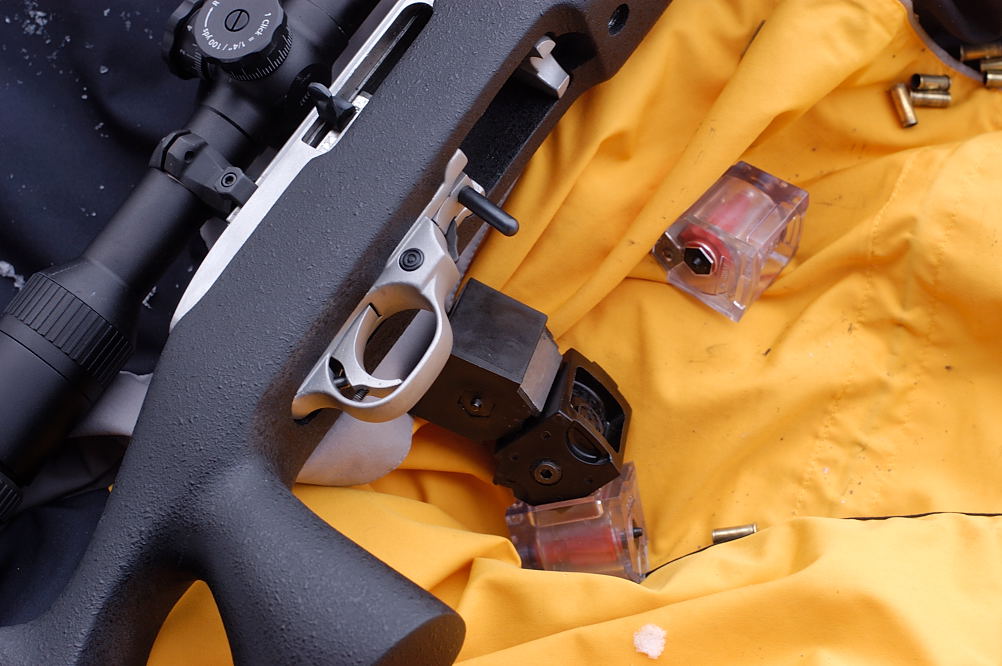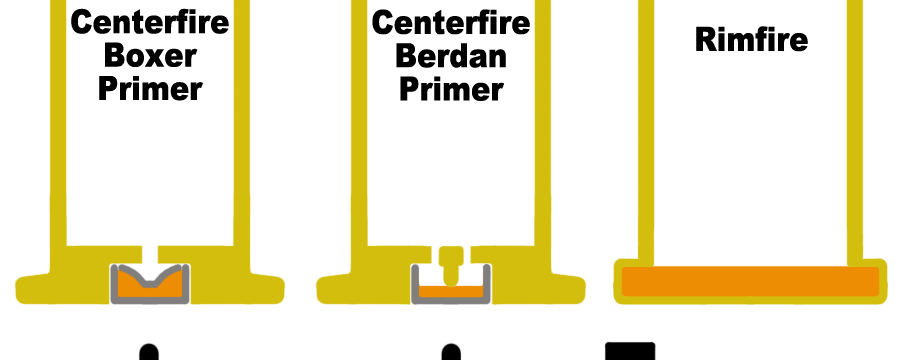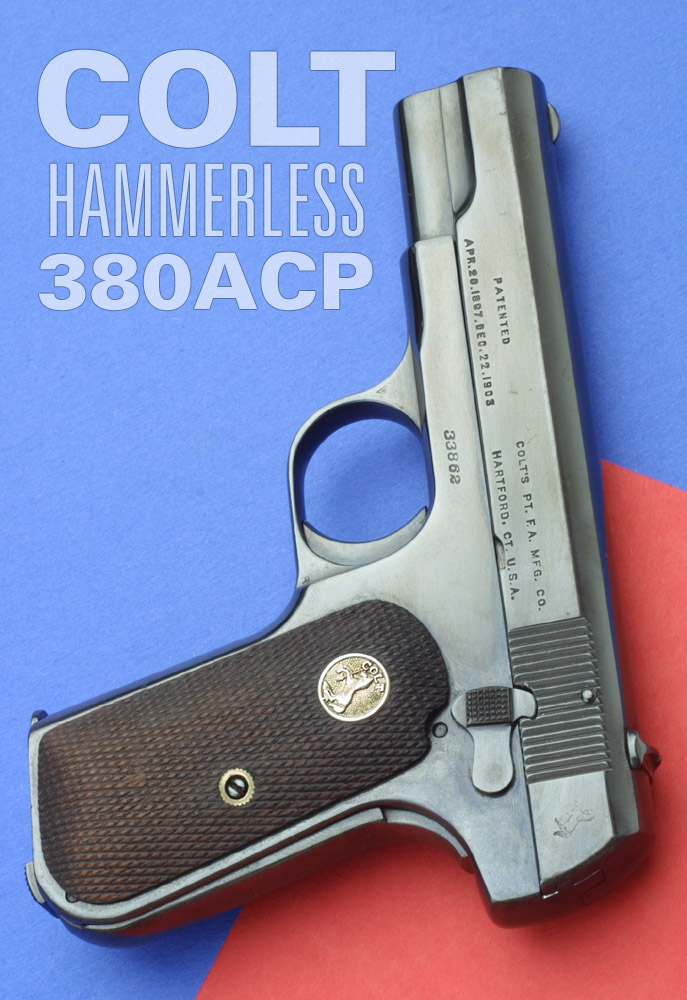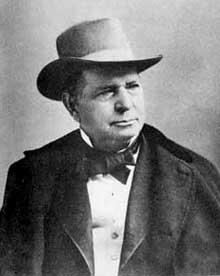|
Semi-automatic Rifle
A semi-automatic rifle is an autoloading rifle that fires a single cartridge with each pull of the trigger, and uses part of the fired cartridge's energy to eject the case and load another cartridge into the chamber. For comparison, a bolt-action rifle requires the user to cycle the bolt manually before they can fire a second time, and a fully automatic rifle fires continuously until the trigger is released. History The first design of a recoil-operated semi-automatic rifle is attributed to Ferdinand Mannlicher, who unveiled the design in 1885 based on work begun in 1883. Other non-gas operated semi-automatic models were the Model 85 and Mannlicher Models 91, 93 and 95 rifles. The designs were deeply flawed and never made past the conceptual/prototype stage due to issues inherent to the black powder used in their cartridges (based around the Austrian 11×58mmR M/77), such as insufficient velocity and excessive fouling; automatic firearms would only become feasible after s ... [...More Info...] [...Related Items...] OR: [Wikipedia] [Google] [Baidu] |
Ruger 10-22
The Ruger 10/22 is a series of semi-automatic rifles produced by American firearm manufacturer Sturm, Ruger & Co., chambered for the .22 Long Rifle rimfire cartridge. It uses a patented 10-round rotary magazine, though higher capacity box magazines are also available. The standard carbine version of the Ruger 10/22 has been in production continuously since 1964,Wood, J.B., ''Firearms Assembly / Disassembly Part III: Rimfire Rifles Revised Edition'', DBI Books, 1994, p.331 making it one of the most successful rimfire rifle designs in history, with numerous third party manufacturers making parts and accessories for upgrading and customization. The 10/22's aftermarket is so prolific that a complete 10/22 can be built without using any Ruger-made components. A magnum version of the 10/22, known as the 10/22 Magnum, chambered for the .22 WMR cartridge, was made from 1998 to 2006. A .17 HMR version, the 10/17, was announced in 2004, but was only listed in the catalog for two ... [...More Info...] [...Related Items...] OR: [Wikipedia] [Google] [Baidu] |
M1919 Browning Machine Gun
The M1919 Browning is a .30 caliber medium machine gun that was widely used during the 20th century, especially during World War II, the Korean War, and the Vietnam War. The M1919 saw service as a light infantry, coaxial, mounted, aircraft, and anti-aircraft machine gun by the U.S. and many other countries. The M1919 was an air-cooled development of the standard US machine gun of World War I, the John M. Browning-designed water-cooled M1917. The emergence of general-purpose machine guns in the 1950s pushed the M1919 into secondary roles in many cases, especially after the arrival of the M60 in US Army service. The United States Navy also converted many to 7.62 mm NATO, and designated them Mk 21 Mod 0; they were commonly used on riverine craft in the 1960s and 1970s in Vietnam. Many NATO countries also converted their examples to 7.62 mm caliber, and these remained in service well into the 1990s, as well as up to the present day in some countries. Operation Loading Th ... [...More Info...] [...Related Items...] OR: [Wikipedia] [Google] [Baidu] |
Remington Arms
Remington Arms Company, LLC was an American manufacturer of firearms and ammunition, now broken into two companies, each bearing the Remington name. The firearms manufacturer is ''Remington Arms''. The ammunition business is called ''Remington''. The company which was broken up was called Remington Outdoor Company. Sturm, Ruger & Co. purchased the Marlin Firearms division of the Remington Outdoor Company in 2020. Founded in 1816 by Eliphalet Remington (as E. Remington and Sons) in Ilion, New York, it was one of the oldest gun makers in the US and claimed to be the oldest factory in the US that still made its original product. The company was the largest rifle manufacturer in North America according to 2015 ATF statistics. The company developed or adopted more cartridges than any other gun maker or ammunition manufacturer in the world. History 19th century origins The Remington company was founded in 1816. Eliphalet Remington II (1793–1861) believed he could bu ... [...More Info...] [...Related Items...] OR: [Wikipedia] [Google] [Baidu] |
Winchester Model 63
The Winchester Model 1903 was the first commercially available semi-automatic firearm made by the Winchester Repeating Arms Company. History The Winchester Model 1903 was designed by T.C. Johnson, who had joined Winchester in 1885 and had become nationally known as an inventor of successful rifles. It was first chambered for the .22 Winchester Automatic cartridge. In 1919, the Model 1903 moniker was shortened to Model 03, and following a partial redesign in the 1930s, was renamed the Model 63. In addition to other changes, the model fired the .22 Long Rifle cartridge. This cartridge was more popular than the .22 Winchester Automatic cartridge, and was demanded by customers. The Model 63 was first available for purchase in 1933 and remained in production until 1958. Production totaled approximately 126,000 Model 1903 rifles and approximately 175,000 Model 63 rifles. Design and Features The Model 1903/Model 63 featured a round barrel. A barrel was approved for manufacturing i ... [...More Info...] [...Related Items...] OR: [Wikipedia] [Google] [Baidu] |
Blowback (arms)
Blowback is a system of operation for self-loading firearms that obtains energy from the motion of the cartridge case as it is pushed to the rear by expanding gas created by the ignition of the propellant charge. Several blowback systems exist within this broad principle of operation, each distinguished by the methods used to control bolt movement. In most actions that use blowback operation, the breech is not locked mechanically at the time of firing: the inertia of the bolt and recoil , relative to the weight of the bullet, delay opening of the breech until the bullet has left the barrel. A few locked breech designs use a form of blowback (example: primer actuation) to perform the unlocking function. The blowback principle may be considered a simplified form of gas operation, since the cartridge case behaves like a piston driven by the powder gases. Other operating principles for self-loading firearms include delayed blowback, blow forward, gas operation, and recoil operati ... [...More Info...] [...Related Items...] OR: [Wikipedia] [Google] [Baidu] |
Winchester Model 1905
The Winchester Model 1905 (also known as the Model 05), is a blowback-operated, semi-automatic rifle produced by the Winchester Repeating Arms Company beginning in 1905 and discontinued in 1920. This rifle loads cartridges from a 5 or 10-round capacity, detachable box magazine located immediately forward of the trigger guard. Winchester offered factory chamberings in .32SL and .35 Winchester Self-Loading (.35 WSL). Notably, a Model 1905 in .35 WSL was used by Harry Payne Whitney on an arctic expedition. The rifle proved reliable in extreme low-temperatures, but was insufficiently powerful for taking large game such as musk ox. The basic design for the Winchester Model 1905 is covered by issued August 27, 1901 and assigned to Winchester by Thomas Crossley Johnson, a key firearms designer for Winchester. This patent was initially used to protect the design of the rimfire Winchester Model 1903, but came to be applied toward the centerfire Winchester Self Loading rifle series ... [...More Info...] [...Related Items...] OR: [Wikipedia] [Google] [Baidu] |
Winchester Model 1903
The Winchester Model 1903 was the first commercially available semi-automatic firearm made by the Winchester Repeating Arms Company. History The Winchester Model 1903 was designed by T.C. Johnson, who had joined Winchester in 1885 and had become nationally known as an inventor of successful rifles. It was first chambered for the .22 Winchester Automatic cartridge. In 1919, the Model 1903 moniker was shortened to Model 03, and following a partial redesign in the 1930s, was renamed the Model 63. In addition to other changes, the model fired the .22 Long Rifle cartridge. This cartridge was more popular than the .22 Winchester Automatic cartridge, and was demanded by customers. The Model 63 was first available for purchase in 1933 and remained in production until 1958. Production totaled approximately 126,000 Model 1903 rifles and approximately 175,000 Model 63 rifles. Design and Features The Model 1903/Model 63 featured a round barrel. A barrel was approved for manufacturing i ... [...More Info...] [...Related Items...] OR: [Wikipedia] [Google] [Baidu] |
Centerfire Ammunition
Two rounds of .357 Magnum, a centerfire cartridge; notice the circular primer in the center A centerfire cartridge is a firearm metallic cartridge whose primer is located at the center of the base of its casing (i.e. "case head"). Unlike rimfire cartridges, the centerfire primer is typically a separate component seated into a recessed cavity (known as the ''primer pocket'') in the case head and is replaceable by reloading. Centerfire cartridges have supplanted the rimfire variety in all but the smallest cartridge sizes. The majority of today's handguns, rifles, and shotguns use centerfire ammunition, with the exception of a few .17 caliber, .20 caliber, and .22 caliber handgun and rifle cartridges, small-bore shotgun shells (intended for pest control), and a handful of antique (and mostly obsolete) cartridges. History An early form of centerfire ammunition, without a percussion cap, was invented between 1808 and 1812 by Jean Samuel Pauly. This was also the first ... [...More Info...] [...Related Items...] OR: [Wikipedia] [Google] [Baidu] |
Rimfire Ammunition
Rimfire ammunition is a type of firearm metallic cartridge whose primer is located within a hollow circumferential rim protruding from the base of its casing. When fired, the gun's firing pin will strike and crush the rim against the edge of the barrel breech, sparking the primer compound within the rim, and in turn ignite the propellant within the case. Invented in 1845, by Louis-Nicolas Flobert, the first rimfire metallic cartridge was the .22 BB Cap (a.k.a. 6mm Flobert) cartridge, which consisted of a percussion cap with a bullet attached to the top. While many other different cartridge priming methods have been tried since the 19th century, only rimfire and the later centerfire cartridges survive to the present day with regular usages. The .22 Long Rifle rimfire cartridge, introduced in 1887, is by far the most common ammunition in the world today in terms of units sold. Characteristics Rimfire ammunition is so named because the firing pin strikes and crushes ... [...More Info...] [...Related Items...] OR: [Wikipedia] [Google] [Baidu] |
Blowback (firearms)
Blowback is a system of operation for self-loading firearms that obtains energy from the motion of the cartridge case as it is pushed to the rear by expanding gas created by the ignition of the propellant charge. Several blowback systems exist within this broad principle of operation, each distinguished by the methods used to control bolt movement. In most actions that use blowback operation, the breech is not locked mechanically at the time of firing: the inertia of the bolt and recoil , relative to the weight of the bullet, delay opening of the breech until the bullet has left the barrel. A few locked breech designs use a form of blowback (example: primer actuation) to perform the unlocking function. The blowback principle may be considered a simplified form of gas operation, since the cartridge case behaves like a piston driven by the powder gases. Other operating principles for self-loading firearms include delayed blowback, blow forward, gas operation, and recoil operat ... [...More Info...] [...Related Items...] OR: [Wikipedia] [Google] [Baidu] |
Winchester Repeating Arms Company
The Winchester Repeating Arms Company was a prominent American manufacturer of repeating firearms and ammunition. The firm was established in 1866 by Oliver Winchester and was located in New Haven, Connecticut. The firm went into receivership in 1931 and was bought by the Western Cartridge Company, a forerunner of the Olin Corporation. The Winchester brand name is still owned by the Olin Corporation, which makes ammunition under that name. The Winchester name is also used under license for firearms produced by two subsidiaries of the Herstal Group – FN Herstal of Belgium and the Browning Arms Company of Ogden, Utah. History Early history Predecessors The ancestor of the Winchester Repeating Arms Company was the Horace Smith and Daniel Wesson partnership of Norwich, Connecticut (not to be confused with the famous Smith & Wesson Revolver Company founded later by the same men). Smith and Wesson acquired Lewis Jennings' improved version of inventor Walter Hunt's 18 ... [...More Info...] [...Related Items...] OR: [Wikipedia] [Google] [Baidu] |


.jpg)
.jpg)



